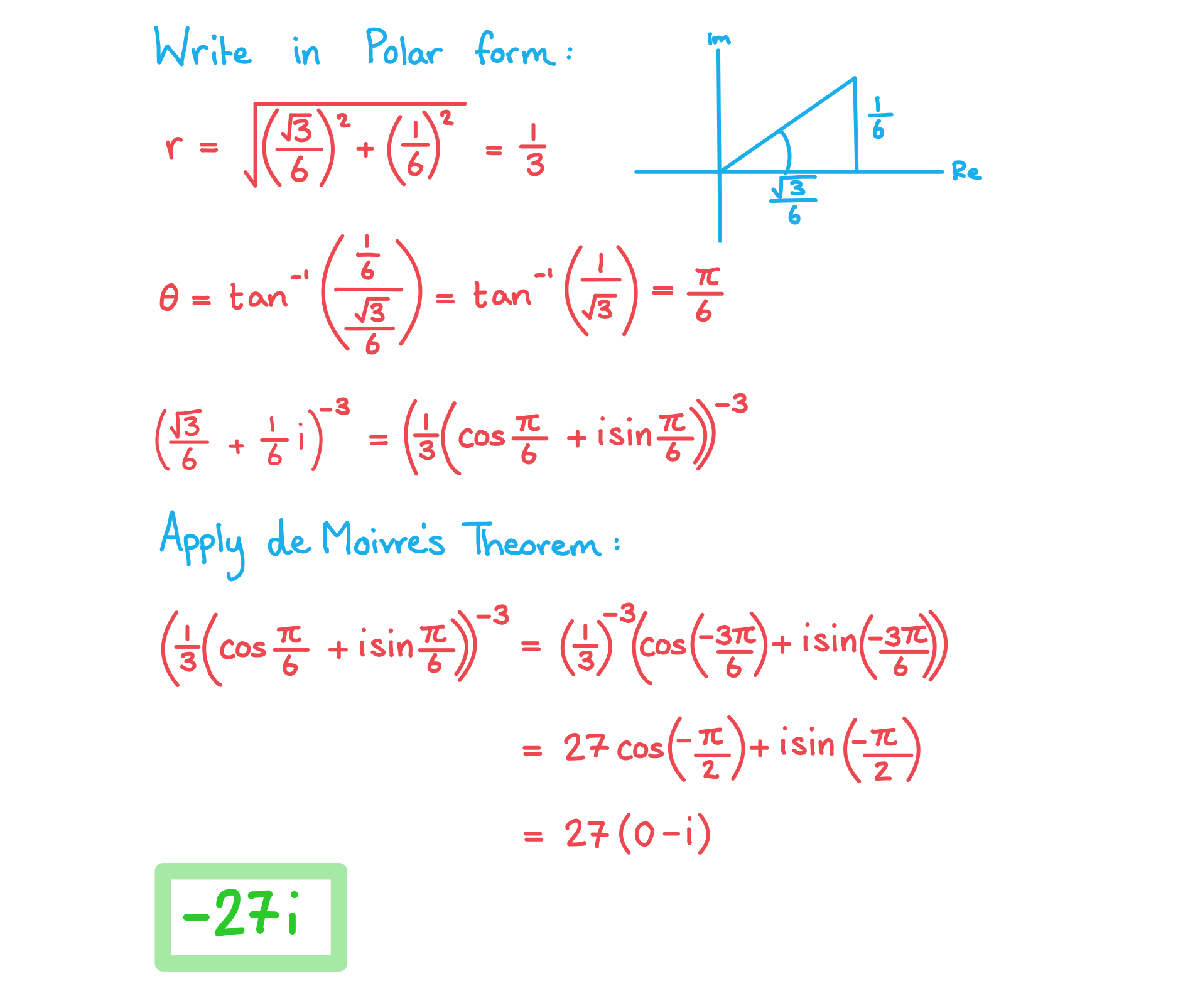De Moivre's Theorem
What is de Moivre’s Theorem?
- de Moivre’s theorem can be used to find powers of complex numbers
- It states that for
- Where
- z ≠ 0
- r is the modulus, |z|, r ∈ ℝ+
- θ is the argument, arg z, θ ∈ ℝ
- n ∈ ℝ
- Where
- In Euler’s form this is simply:
- In words de Moivre’s theorem tells us to raise the modulus by the power of n and multiply the argument by n
- In the formula booklet de Moivre’s theorem is given in both polar and Euler’s form:
How do I use de Moivre’s Theorem to raise a complex number to a power?
- If a complex number is in Cartesian form you will need to convert it to either modulus-argument (polar) form or exponential (Euler’s) form first
- This allows de Moivre’s theorem to be used on the complex number
- You may need to convert it back to Cartesian form afterwards
- If a complex number is in the form
then you will need to rewrite it as
before applying de Moivre’s theorem
- A useful case of de Moivre’s theorem allows us to easily find the reciprocal of a complex number:
-
- Using the trig identities cos(-θ) = cos(θ) and sin(-θ) = - sin(θ) gives
-
- In general
Exam Tip
- You may be asked to find all the powers of a complex number, this means there will be a repeating pattern
- This can happen if the modulus of the complex number is 1
- Keep an eye on your answers and look for the point at which they begin to repeat themselves
Worked example
Find the value of , giving your answer in the form a + bi.


